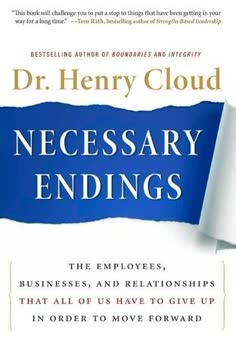つの重要なポイント
1. 成長と成功のために必要な終わりを受け入れる
始まりの技術は偉大だが、終わりの技術はさらに偉大である。
終わりは進歩のために不可欠である。 バラの木が繁栄するために剪定が必要であるように、個人や組織も成長と成功を達成するために必要な終わりを受け入れなければならない。これらの終わりは、パフォーマンスの低い従業員の解雇、不採算の製品ラインの廃止、有害な人間関係の終了など、さまざまな形を取ることがある。
終わりの必要性を認識することが重要である。 多くの場合、人々や企業は恐怖、慣れ親しんだものへの安心感、誤った忠誠心のために非生産的な状況にとどまる。しかし、終わりが人生やビジネスの自然で必要な一部であることを認めることで、より前向きな心構えでそれに取り組み、変化の恩恵を享受することができる。
終わりは新しい始まりの機会を創出する。 もはや役に立たないものを手放すことで、新しい事業や成長のためのリソース、エネルギー、集中力を解放する。このプロセスにより、個人や組織は適応し、革新し、最終的にはその潜在能力を最大限に発揮することができる。
2. 人生とビジネスにおける3つの剪定の種類を認識する
人生は持続できる以上の芽を生み出す。
3つの剪定が重要である:
- 健康だが最良ではない芽を取り除く
- 回復しない病気の枝を切り取る
- スペースを占める死んだ枝を排除する
健全な剪定には識別力が必要である。 人生やビジネスにおいて、どの要素がどのカテゴリーに該当するかを特定することが重要である。このプロセスには正直な評価と時には難しい決断が伴う。例えば、企業は利益を上げているが中核事業ではない部門を廃止し、より有望な機会に集中する必要があるかもしれない。
剪定は成長のためのスペースを作る。 必要でないもの、パフォーマンスが低いもの、または死んでいるものを取り除くことで、残りの要素が繁栄することができる。この原則は、個人的な関係、キャリアの選択、ビジネス戦略に適用される。定期的な剪定により、リソースが効率的かつ効果的に配分され、全体的な成果が向上する。
3. ライフサイクルと季節を理解して終わりを正常化する
何も永遠には続かない。
変化は避けられないことを認識する。 すべてのものには自然なライフサイクルがあることを受け入れることで、終わりに対する抵抗を減らし、より賢明に対処することができる。この心構えにより、何かがそのコースを終えたときにそれを認識し、過去に固執するのではなく、積極的に行動することができる。
現在の季節に合わせた行動を取る。 農家が異なる季節に応じて活動を調整するように、個人や組織も現在のフェーズに適した行動を認識する必要がある。これには以下が含まれるかもしれない:
- 春:新しいアイデアやイニシアチブを植える
- 夏:既存のプロジェクトを育て、発展させる
- 秋:努力の結果を収穫する
- 冬:反省し、計画し、次のサイクルに備える
人生とビジネスの流れを受け入れる。 成長、成熟、衰退、再生の自然なサイクルがあることを理解することで、終わりをより容易かつ目的を持って乗り越えることができる。この視点により、終わりを失敗ではなく、進化と改善の継続的なプロセスの必要なステップとして見ることができる。
4. 変化と終わりに対する内部抵抗を克服する
希望が遅れると心が病むが、望みがかなうと命の木となる。
内部の障害を特定し対処する。 必要な終わりに対する一般的な障害には以下が含まれる:
- 未知への恐怖
- 誤った忠誠心
- 過去の投資への過度の執着
- 希望的観測や偽りの希望
抵抗を克服するための戦略を開発する。 これには以下が含まれるかもしれない:
- 終わりを成長の機会として再構築する
- メンターや信頼できるアドバイザーからのサポートを求める
- 行動しないことの明確な期限と結果を設定する
- 難しい移行期間中に自己慈悲を実践する
成長マインドセットを育む。 挑戦や終わりを学習と改善の機会として見ることで、変化に対する抵抗を減らすことができる。この視点により、必要な終わりに対して好奇心と開放性を持って取り組むことができ、恐怖や回避ではなく、前向きな姿勢で対処することができる。
5. 賢者、愚者、悪人を識別して情報に基づいた決定を下す
賢者は人生の要求に応じ、未熟な者は人生が自分の要求に応じることを求める。
3種類の人々を理解する:
- 賢者:フィードバックを受け入れ、責任を取り、前向きな変化をもたらす
- 愚者:フィードバックに抵抗し、他人を非難し、変化を拒む
- 悪人:意図的に害や破壊をもたらす
人のタイプに応じてアプローチを調整する。 賢者には、改善のためのリソースとサポートを提供する。愚者には、明確な境界と結果を設定する。悪人には、自分自身と他人を守るために距離を置き、必要に応じて専門家の助けを求める。
行動のパターンを認識する。 人々がフィードバックや挑戦にどのように反応するかを観察することで、彼らをよりよく分類し、関わり方について情報に基づいた決定を下すことができる。この知識は、個人的な関係や職場環境の両方で役立ち、時間とエネルギーを賢く投資することができる。
6. 惰性を克服し、変化を促進するための緊急性を創出する
真実が現れると、賢者は光を見てそれを受け入れ、調整を行う。
緊急感を育む。 惰性を克服し、必要な終わりを促進するために、行動しないことの否定的な結果と変化の肯定的な結果の両方を強調する説得力のあるビジョンを作成する。この二重のアプローチは、恐怖と希望の両方に訴えることで行動を促す。
緊急性を創出するための戦略:
- 明確な期限と結果を設定する
- 望ましい未来の状態を視覚化し、伝える
- 変化を必要とする痛点に近づく
- 進捗を定期的に測定し、結果を共有する
- 変革を支援する変革エージェントの連合を構築する
構造を通じて勢いを維持する。 必要な終わりの緊急性と重要性を強化するシステムとプロセスを確立する。これには、定期的なチェックイン、進捗報告、行動への公約などが含まれるかもしれない。変化を支援する環境を作ることで、必要な終わりを成功裏に実行する可能性が高まる。
7. 共感と明確さを持って必要な終わりを実行する
終わりは重要だが、私たちはそれを好むことはほとんどない。
困難な会話のために徹底的に準備する。 必要な終わりを開始する前に、以下の点を考慮する:
- 目標と望ましい結果を明確にする
- 予想される反応を予測し、対応を準備する
- 信頼できるアドバイザーと会話を練習する
- 決定を支持する関連データと例を収集する
共感と断固たる態度でコミュニケーションを取る。 必要な終わりを実行する際には、共感と明確さのバランスを取ることを目指す。相手の感情や視点を認めつつ、決定とその理由について明確で一貫したメッセージを伝える。
終わりを告げた後のサポートを提供する。 終わりを伝えた後、影響を受けた人々が移行を助けるための適切なリソースや支援を提供する。これには、退職金、就職支援、他の機会への紹介などが含まれるかもしれない。配慮と考慮を示すことで、困難な終わりでも前向きな関係を維持することができる。
8. 重要な終わりの後に前進するために悲しみを処理する
正しい選択があなたに失わせるかもしれないもの、時には人を手放すことができなければならない。
喪失を認め、尊重する。 重要な終わりは、必要なものであっても、しばしば悲しみを伴うことを認識する。自分自身や他人が喪失に関連する感情、例えば悲しみ、怒り、失望を経験し、表現することを許す。
悲しみを処理するための戦略:
- 終わりを記念する儀式やセレモニーを作る
- 日記をつけたり、信頼できる友人と話したりして感情を表現する
- 必要に応じて専門的なサポートを求める
- 移行期間中に自己ケアを実践する
経験から学ぶ。 悲しみに時間をかけた後、終わりを振り返り、貴重な教訓や洞察を引き出す。何がうまくいったのか、何が違っていたのか、これらの学びを将来の状況にどのように適用できるかを考える。この反省と統合のプロセスは、終わりを成長と知恵の機会に変えるのに役立つ。
最終更新日:
FAQ
What's Necessary Endings about?
- Focus on Endings: Necessary Endings by Dr. Henry Cloud explores the critical role of endings in personal and professional growth, emphasizing the need to let go of unproductive elements in life.
- Growth Through Letting Go: The book argues that progress often requires ending relationships, jobs, or practices that no longer serve us.
- Practical Strategies: It offers strategies for identifying and executing necessary endings, helping readers to move forward effectively.
Why should I read Necessary Endings?
- Transformative Insights: The book provides insights into how endings are a natural and essential part of life, encouraging readers to embrace change.
- Real-World Applications: Dr. Cloud uses relatable examples and case studies to illustrate his points, making the concepts applicable to everyday situations.
- Empowerment: It empowers readers to make difficult decisions that lead to a more fulfilling and productive life.
What are the key takeaways of Necessary Endings?
- Endings Are Essential: The book highlights that "the good cannot begin until the bad ends," stressing the importance of letting go to create space for new opportunities.
- Pruning for Growth: Introduces the concept of "pruning," which involves removing the unnecessary to allow for growth and improvement.
- Recognizing Reality: Emphasizes the need to recognize reality and understand when something is hopeless, prompting necessary endings.
What is the concept of "pruning" in Necessary Endings?
- Definition of Pruning: Pruning is a proactive process of ending non-beneficial aspects to allow healthy parts to thrive.
- Three Types of Pruning: Involves cutting off healthy but not the best branches, removing sick branches that won't recover, and eliminating dead branches.
- Application in Life: This concept applies to both personal and business contexts, requiring regular assessment and removal of non-contributing elements.
How does Dr. Cloud suggest we deal with necessary endings?
- Embrace the Grief: Acknowledging and embracing the grief associated with endings is crucial for healing and moving forward.
- Create Urgency: He advises creating a sense of urgency to motivate action and prevent stagnation.
- Have the Conversation: Provides strategies for having difficult conversations about endings, ensuring they are handled with care and respect.
What are the reasons we avoid necessary endings according to Necessary Endings?
- Fear of Confrontation: Many avoid endings due to fear of confrontation and the emotional discomfort it brings.
- False Hope: Clinging to false hope that situations will improve can lead to prolonged misery.
- Lack of Skills: A lack of skills or experience in executing endings can prevent necessary changes.
How can I identify when an ending is necessary according to Necessary Endings?
- Assess Performance: Evaluate past performance to decide if you want to continue with the same results.
- Evaluate Hope: Determine if there are objective reasons for hope or if you're merely wishing for change.
- Look for Signs: Signs of stagnation or decline can indicate the need for an ending.
What is the difference between hoping and wishing according to Necessary Endings?
- Hope vs. Wish: Hope involves having "grounds for believing" in a possibility, while wishing lacks a basis in reality.
- Objective Reasons: Hope should be based on objective reasons and evidence, unlike wishing.
- Importance of Realism: Understanding this difference is crucial for making informed decisions about change and endings.
What are the three types of people discussed in Necessary Endings?
- Wise People: Open to feedback and willing to learn, they make necessary adjustments and foster hope for improvement.
- Foolish People: Resist feedback, blame others, and avoid responsibility, making engagement frustrating.
- Evil People: Intentionally harm others or disrupt progress, requiring protection and necessary endings without further engagement.
How can I create urgency for necessary endings according to Necessary Endings?
- Play the Movie Forward: Visualize future consequences of not making an ending to create urgency.
- Set Deadlines: Establish clear deadlines to focus energy and motivate action.
- Stay Close to the Misery: Remain aware of the current pain to maintain motivation for change.
What role does grief play in Necessary Endings?
- Processing Grief: Essential for acknowledging feelings and moving forward after an ending.
- Symbolic Events: Engaging in symbolic acts can help honor what has been lost and facilitate closure.
- Metabolizing Experiences: Learning from past experiences prevents repeating mistakes in the future.
What are the best quotes from Necessary Endings and what do they mean?
- “You cannot deal with everyone in the same way.”: Highlights the need to adapt approaches based on personality types.
- “Correct a wise person and he will be wiser still.”: Emphasizes the value of feedback and growth mindset.
- “You have to be able to let go of the very thing, sometimes the very person, that the right choice may cause you to lose.”: Stresses the necessity of tough decisions for the greater good.
レビュー
本書『Necessary Endings』は、関係、プロジェクト、または状況を終わらせるべき時を知るための実践的なアドバイスで高く評価されている。読者は、異なる性格タイプに対処し、困難な決断を下す際のクラウドの洞察を高く評価している。多くの人がこの本を個人生活と職業生活の両方に適用できると感じている。ビジネスに焦点を当てていると指摘するレビューもあるが、それでも原則に価値を見出している。成長、変化、そして前進するための知恵が称賛されている。一部の批評家は繰り返しが多いと指摘しているが、全体として読者は人生の転換期を乗り越えるための有益なガイドと感じている。
Similar Books























